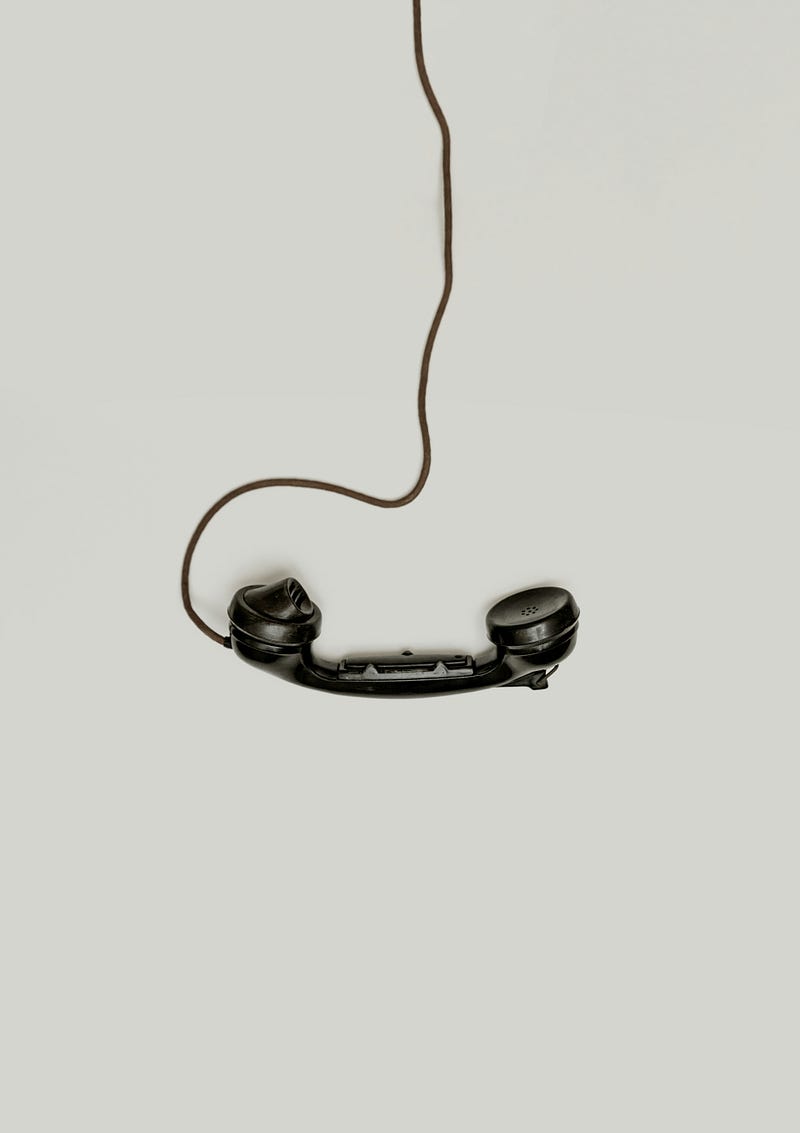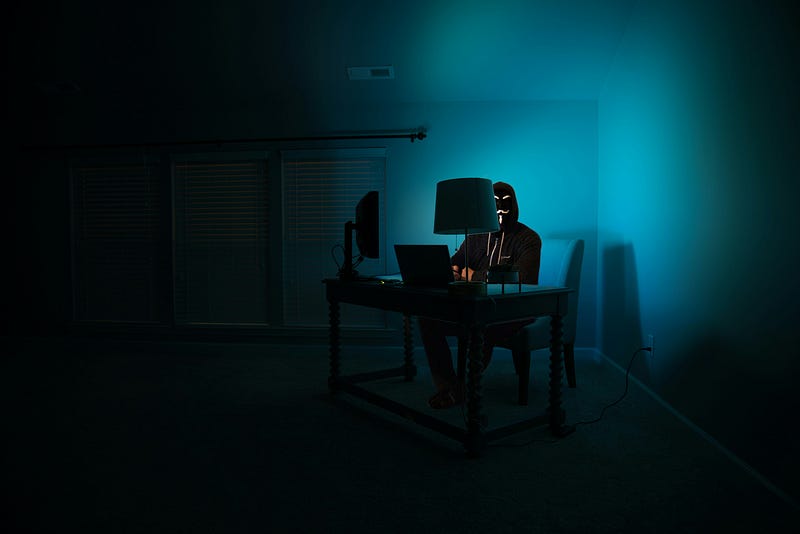# Exploring Mental Health in the Digital Era: A Transformative Journey
Written on
Chapter 1: The Evolution of Digital Communication
As many of you likely know, the digital environment is continuously changing. Since the inception of the internet on January 1, 1983, it has never been stationary, constantly reinventing itself with each cycle, and progressing at an increasingly rapid pace. Reflecting on the year 1990, the idea of transmitting videos online seemed almost impossible. Yet, in a remarkably brief period, we shifted from the novelty of video calls via MSN Messenger to broadcasting live in high definition. Those who remember the days of dial-up internet will understand the limited time one could spend online, as it often meant relinquishing the telephone line in my household.
Today, the thought of being disconnected is not just inconvenient; it's genuinely alarming. During a trip to Hawaii, I found myself compelled to upgrade my mobile plan to ensure seamless data access. Our reliance on the internet has become so ingrained that it is now woven into nearly every aspect of our daily lives, from commuting to professional engagements.

The digital landscape has transformed remarkably, evolving from simple communication tools such as email and basic social media platforms to the vast and complex networks we navigate today. In the early stages of the internet's rise in the 1990s, the primary goal was connecting individuals. I fondly recall spending countless hours writing emails and chatting with friends, which marked a significant shift away from traditional landline calls. This new medium allowed the sharing of photos, humorous stories, and messages without the risk of parental oversight.
The launch of Google in 1998 was a pivotal moment, turning the internet into a realm of exploration, discovery, and intrigue. The websites of that time, resembling early blogs, invited curiosity and encouraged users to explore content at a leisurely pace, fostering a deeper connection with the material.

Before social media platforms like MySpace emerged, blogging took on a different guise — sharing images with brief captions and inviting user comments. This virtual journaling functioned as an open forum for all to view. It’s intriguing to note the contrast with today’s safety protocols, especially as we navigate the complexities of sharing personal information online.
In 2003, the "real" first social media platform—MySpace—was introduced, peaking around 2007 with over 100 million monthly active users. This period also saw the rise of dating websites. While my memories may be tinted with nostalgia, it seems the internet back then did not isolate individuals from reality; it instead fostered new relationships.
In 2004, Facebook (initially called TheFacebook until 2005) made its debut, first limited to Harvard students and gradually expanding to other universities. It wasn't until 2006 that the general public could join. I personally signed up in 2007 at a friend's urging, although I didn’t find it significant at that time. However, as more friends began joining, it quickly became a vital part of my online identity. Facebook truly gained momentum for me when I could easily access it via my first smartphone, allowing me to share moments instantly. This transformed it into the primary platform for updating loved ones about my life. As the network grew, I made many "friends" I had never met in person, some of whom developed into meaningful relationships, while the darker elements of the digital world, such as scams, started to surface.

In 2009, Facebook introduced the "like" button, a groundbreaking feature that redefined user interaction. It shifted the focus from thoughtful engagement and appreciation of posts to a quicker, less personal form of media consumption, encouraging users to express affection with a simple click. Consequently, the number of likes became a metric for popularity and post value, leading to an unhealthy obsession. This quantitative assessment of worth created a problematic comparison with others, affecting self-esteem and increasing stress, ultimately impacting mental health. The relentless quest for validation through likes became a consuming pursuit.
So, what does this evolution signify? Over the years, I believe the digital space has shifted from being a nurturing environment that fostered relationships, exploration, and learning to one that often promotes escapism under the guise of connectivity. A prime example is how we celebrate birthdays today — in my youth, I would receive numerous phone calls, which, though overwhelming, were heartwarming. Nowadays, while I still get calls from close friends and family, the overwhelming majority of birthday greetings come through Facebook, often prompted by a reminder, pre-written messages, and emojis, all dispatched with a simple click. I, too, am guilty of this — prioritizing convenience over genuine connection. In fact, if someone outside my close circle were to call me unexpectedly on my birthday, it would feel oddly out of place.

The internet and our devices, once primarily tools for conventional communication, have transformed our interactions. The way we communicate has evolved, with most of our needs being met through emails, chats, and texts, leaving phone calls in the background. A quick survey of friends will reveal a strong preference for texting over traditional conversations.
Though I may be seen as old-fashioned, I find that after a few text exchanges, I prefer to make a phone call. It’s not simply about laziness in typing; it’s about the impersonal nature of texting that lacks genuine human connection. Thankfully, emojis have been introduced to convey feelings in this virtual realm.
Is everything negative? Certainly not, but negativity tends to capture our attention more readily, drawing us in. Beyond the façade of connection, the internet does facilitate real interactions, discussions, and movements. Powerful social movements have emerged from this virtual space, uniting voices around social issues and providing a platform for individuals to address concerns with governments, corporations, and institutions. This collective force has compelled entities to improve and take action. During the COVID-19 pandemic, the internet and social media served as vital resources, offering solace through various means, such as video games, chat rooms, social platforms, podcasts, and other online activities that enabled individuals to connect with like-minded people.
While the internet is rife with misinformation, it also offers genuine information that assists millions in navigating life's challenges daily. Sometimes, all you need is a YouTube tutorial on installing a TV on your wall. The beauty of the internet lies in its versatility, serving as a resource for whatever we, as humans, require. Furthermore, it empowers us to shape, influence, and advocate for a safer and improved digital environment that transcends greed and exploitation.

Given the profound influence of the internet, it plays a crucial role in our lives, affecting us on multiple levels. While some impacts, such as social media addiction, incessant scrolling on TikTok or YouTube Shorts, and binge-watching Netflix, are readily apparent, many fail to reflect on the potential ramifications for mental health, societal norms, cultures, and beliefs, particularly for developing generations.
The next chapter will delve deeper into how social media affects mental health, illuminating the complexities of this intricate relationship.
Join me for Part Three, which will focus on Mental Health in the Digital Age, set to be released on February 4th, 2024.
Chapter 2: Videos on Mental Health in the Digital Age
The first video, "Mental Health in the Digital Age: Navigating Mental Health Care," explores the challenges and opportunities presented by technology in managing mental health.
The second video, "Canada Goose: Navigating the Digital Landscape: Targeting Gen Z and Safeguarding Mental Health," discusses how brands are addressing mental health concerns among younger generations in the digital space.